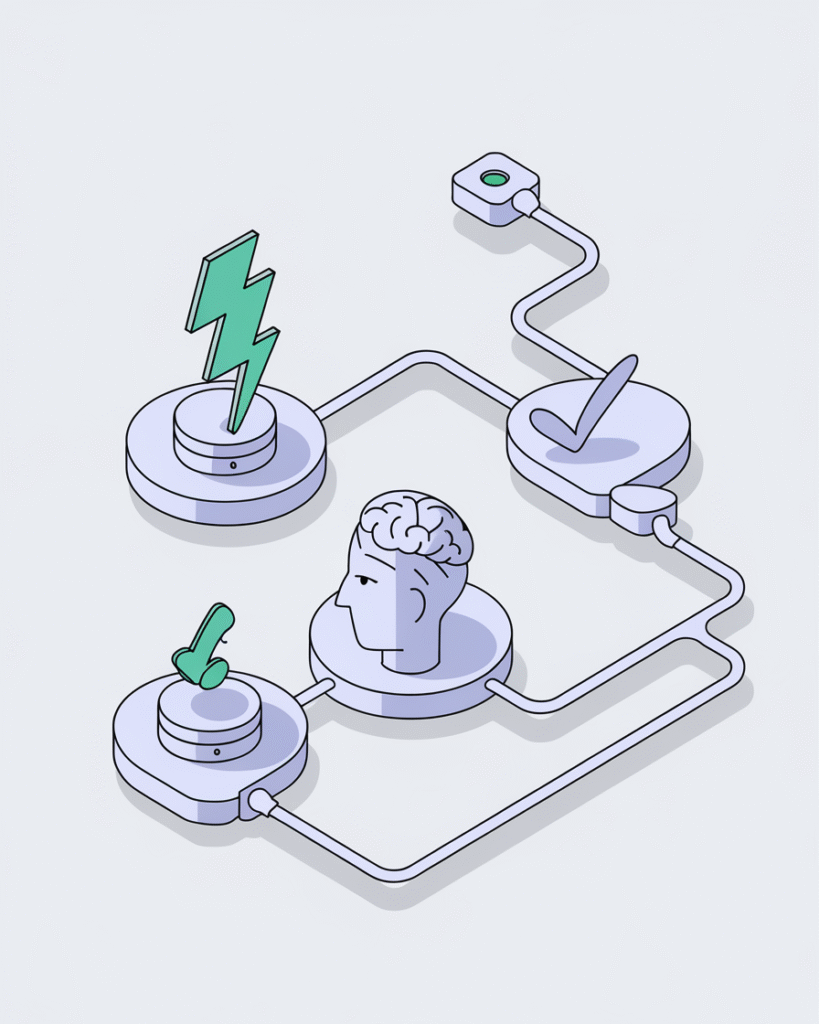AI Tools to Automate Repetitive Tasks are not just a trend, they are a practical way to reclaim time and focus on work that matters. If you feel stuck in copy-paste loops, status updates, or calendar shuffling, you are not alone. Many teams drown in routine tasks, which slowly chips away at creativity and momentum.
This blog exists to fix that. On our About page we share a simple story. After years of juggling content, clients, and research, I hit a wall. I tested hundreds of AI workflows, built repeatable systems, and saw something change. Burnout eased, output went up, and the quality of thinking improved. That experience turned into a mission. I help readers use AI tools to automate repetitive tasks with clear steps, real examples, and honest recommendations. The aim is practical progress, not hype.
In this guide you will learn how AI tools to automate repetitive tasks evolved, what they do well, and where they fall short. You will see a deep explanation of the core concept with examples that make sense. You will get a step-by-step framework you can follow today. You will explore the best tools and platforms, learn from research, and prepare for what is coming next.
I will also point you to useful internal resources as you go. If you want quick wins, start with our guide on how to use AI assistants to automate daily tasks for a simple foundation. If you want a wider snapshot of the landscape, skim our roundup of best free AI tools. Both pieces pair well with this article and help you build a system that lasts.
By the end, you will know how to choose AI tools to automate repetitive tasks that fit your goals, budget, and workflows. You will have a repeatable method you can teach your team. Most of all, you will have more mental space for deep work, which is what improves results over time.
Table of Contents
Table of Contents
Context & Evolution
The idea behind AI tools to automate repetitive tasks did not start with chatbots. It goes back to rules, templates, and macros that helped people speed up clicks and keystrokes. Early office software had mail merges and spreadsheet formulas. Then simple automation tools arrived, which chained actions together. These early systems were helpful, but they were brittle. One change in a form or a field and the whole thing broke.
The next wave brought cloud apps, open APIs, and no-code connectors. People linked email, forms, sheets, and project tools with drag and drop logic. This pushed automation into daily work. It made sense for small teams and freelancers. Still, these flows needed clean inputs. If a team member wrote a note in a new format, the chain failed. Much of the work stayed manual because the software could not understand context.
Modern AI changed that. Today, AI tools to automate repetitive tasks can read unstructured text, understand intent, and produce tidy outputs. They can summarize, extract, classify, and route information without a strict template. This is the shift. Instead of building fragile trees of rules, we now design workflows that rely on understanding, which is more flexible in messy, real environments.
Another change is the move from single-purpose bots to general assistants. Early tools did one job. Now assistants handle intake, processing, and follow-ups across many apps. They watch inboxes, label messages, draft replies, update tickets, schedule calls, and log notes. The same assistant can support sales, marketing, and operations. This reduces tool sprawl and lowers switching costs.
Security and governance improved as well. Business users want control and traceability. AI platforms now include audit trails, permissioning, encryption, and admin dashboards. This lets leaders ship AI tools to automate repetitive tasks without losing oversight. Teams can standardize prompts, set review steps, and track outcomes. That helps with compliance and builds trust.
Finally, the human side matured. People learned that AI thrives when the work is well scoped. Clear roles, simple handoffs, and thoughtful prompts make outcomes stable. Leaders coach teams to document routines, define quality bars, and keep humans in the loop where judgment matters. This mix of structure and flexibility is why adoption is rising. The goal is not to replace people. It is to remove drag and open time for higher value work.
Deep Explanation of the Core Concept
What it is, in plain English
AI tools to automate repetitive tasks are systems that take routine steps off your plate. They collect inputs, interpret them, make a decision, and complete the next action. They work in your email, docs, chat, CRM, and calendar. They use natural language to follow instructions, which means less rigid configuration and more adaptable workflows.
How they differ from classic automation
Traditional automation depends on strict rules. If X happens, do Y. It is fast, but it breaks when inputs change. AI-powered automation understands text, images, and context. It can handle fuzzy inputs, which keeps flows alive when reality shifts. This matters in real work, where people write notes in many ways and every client has a new edge case.
The building blocks
- Triggers start the flow. A new email arrives, a form is submitted, a deal stage changes, or a support ticket opens.
- Parsers read the content. AI identifies intent, extracts entities, and classifies the request.
- Policies guide decisions. You give the assistant rules of thumb and quality bars.
- Actions complete the task. The assistant drafts replies, updates fields, schedules meetings, creates summaries, or posts to a channel.
- Reviews add control. Humans approve high-impact steps, then the flow continues.
- Logs capture outcomes for audit and learning.
Beginner view
Start with one annoying task. For example, weekly status updates. Teach an assistant to pull from tasks, messages, and docs. Have it draft a short update, then send for review. Keep the scope tight. You will learn what context it needs, where mistakes happen, and how to fix them. This makes the next task easier.
Advanced view
Map an entire process. Think intake to resolution. In support, that means triage, assignment, response drafting, and follow-ups. In sales, that means lead capture, enrichment, outreach, and scheduling. Use AI tools to automate repetitive tasks across the chain, not in one place. Add guardrails with policies, templates, and human review for sensitive work. Track cycle time and resolution quality, not just message counts.
Where psychology fits
Good systems match how people think. We reduce cognitive load by removing context switching and micro decisions. When AI takes the repetitive steps, people can focus on judgment and empathy. That improves morale and lowers burnout. Clear boundaries also build trust. People know which tasks they own and which tasks the assistant owns.
Comparison table
| Dimension | Traditional Automation | AI Tools to Automate Repetitive Tasks |
|---|---|---|
| Input requirements | Structured, fixed fields | Unstructured text or mixed data |
| Setup effort | High upfront mapping | Instruction-driven, faster iteration |
| Flexibility | Low when inputs vary | High, adapts to variations |
| Error handling | Fails on edge cases | Recovers with context and rules |
| Maintenance | Frequent updates | Fewer changes due to understanding |
| Use cases | Numeric and simple | Text heavy, multi-step, cross-app |
| Human role | Configure and fix | Coach, review, and improve |
When to avoid over-automation
Not every task should be automated. If a step depends on deep human judgment or an emotional moment, keep a person in the loop. Use the assistant to prepare options and context. Let the person decide. This balance keeps quality high and protects relationships.
Internal resources to go deeper
For a quick landscape view, check our guide to top AI apps. If tool fatigue is real for you, see how one assistant can replace many in our post on AI tools that replace daily apps. Both pieces reinforce the ideas in this section and help you build with confidence.
Real-World Applications & Impact

AI tools to automate repetitive tasks are showing real power in how they free people to do work that matters. Instead of replacing jobs, they are reshaping them, helping workers focus on creative, analytical, and emotional parts of their roles. Let’s look at a few examples that make this more concrete.
1. Customer Support
Customer service teams often drown in tickets and repetitive questions. With AI tools to automate repetitive tasks, chatbots can handle the initial intake, sort requests, and even suggest solutions before a human steps in. For instance, Zendesk and Intercom now integrate AI that classifies customer intent and routes the query to the right department automatically. This cuts first-response time by up to 60%, while agents handle only the complex cases.
2. Marketing Workflows
Marketers have long dealt with spreadsheets, reports, and campaign updates. AI tools simplify this by pulling data from multiple sources and generating ready-to-use reports. Platforms like HubSpot’s Marketing Hub and Jasper AI let marketers plan posts, draft copy, and even schedule social media content. This is not about shortcuts; it is about consistency. Imagine scheduling a month’s worth of social content in one afternoon, leaving room for creative strategy the rest of the week.
For deeper marketing automation insights, you can explore HubSpot’s official automation resources which show how AI-powered workflows are transforming campaign management.
3. Human Resources
Recruiters and HR professionals spend hours screening resumes. AI tools to automate repetitive tasks, such as Workable and Recruitee, scan applications, flag top candidates, and even send follow-up emails. This helps recruiters focus on conversations, not paperwork. When combined with natural language understanding, the software can identify soft skills from cover letters or social profiles, providing a fuller candidate view.
4. Finance and Accounting
In finance, repetitive work includes invoice matching, data entry, and reconciliation. AI tools like QuickBooks and Ramp now categorize expenses automatically, detect anomalies, and even predict cash flow. A finance team that once spent Fridays double-checking spreadsheets can now review exceptions and plan strategy instead.
5. Healthcare and Administration
In hospitals, nurses and admin staff juggle scheduling, record entry, and insurance claims. Tools like Olive AI automate documentation and appointment reminders. This helps reduce burnout and allows medical staff to spend more time on patient care. The outcome is better efficiency and higher satisfaction across staff and patients.
6. Everyday Life
AI tools to automate repetitive tasks are not only for business. Everyday users automate grocery lists, reminders, and budget tracking. Voice assistants like Alexa and Google Assistant, combined with services such as Zapier, can order groceries, create to-do lists, and manage appointments. The idea is simple: if a task repeats often, it should not take your focus every time.
The impact of this shift is more than saved time. It is a mental shift. People begin to see work differently. Instead of endless cycles of routine, there is more focus on creative thinking, decision-making, and connection. When automation becomes normal, burnout drops and job satisfaction grows.
Step-by-Step Framework
If you are ready to use AI tools to automate repetitive tasks, here’s a step-by-step method that works for individuals and small teams.
Step 1: Identify Repetitive Work
List every task that repeats weekly or daily. It could be responding to the same emails, updating spreadsheets, or managing meeting notes. Choose the ones that drain time but don’t require deep judgment.
Step 2: Map the Workflow
Write down each step of that task. For instance, if it’s sending status reports, list how you gather data, compile it, and send it. Mapping helps you see where automation can plug in.
Step 3: Choose the Right Tool
Pick an AI platform that matches your needs. Zapier, Make, and Notion AI work well for workflow chains. ChatGPT, Jasper, and Writesonic handle writing tasks. Grammarly and Wordtune refine language. Each one handles a different layer of automation.
You can explore reviews and comparisons on sites like TechRadar’s AI automation software list to get current insights before choosing.
Step 4: Start with One Process
Do not automate everything at once. Start with one task, test it, and improve it. This prevents confusion and helps you learn how the AI behaves.
Step 5: Give Clear Instructions
AI thrives on context. If you ask it to “summarize messages,” explain what to include and what to skip. Add examples. Over time, your prompts will improve, and the AI will need fewer corrections.
Step 6: Integrate with Daily Tools
Connect your automation to your main platforms: Google Workspace, Slack, Asana, Trello, or ClickUp. The goal is flow, not friction. You should not need to switch tabs constantly.
Step 7: Review and Adjust
Check the AI’s output regularly. If it makes a mistake, clarify the prompt or rule. This ongoing refinement keeps accuracy high and ensures automation supports your real goals.
Step 8: Document the System
Write a simple guide on what the AI does and how. This helps others in your team understand and maintain it. It also saves time when scaling or delegating.
Step 9: Monitor ROI
Track time saved, error rates, and employee satisfaction. The impact of AI tools to automate repetitive tasks is not just in minutes saved, but in energy gained. When people feel lighter, performance rises naturally.
Step 10: Scale Thoughtfully
Once a single workflow runs smoothly, expand to other areas. Move from reports to customer follow-ups or project updates. Add conditional logic and triggers to handle complex tasks.
Small, consistent wins compound over time. Within a few months, you will have an ecosystem of smart automations that quietly keep your workday organized.
Tools, Platforms & Ecosystem

AI tools to automate repetitive tasks now come in many categories. Below are some of the most useful ones and what they do best.
| Tool | Best For | Pros | Cons |
|---|---|---|---|
| Zapier | Cross-app automation | Easy to use, connects thousands of apps | Limited free tier |
| Make (formerly Integromat) | Visual workflow building | Detailed control, supports complex chains | Can feel technical for beginners |
| Notion AI | Writing and task organization | Built into Notion workspace, flexible | Limited integration outside Notion |
| ChatGPT | Writing, summarizing, and idea generation | Understands context well | Needs clear prompts to stay accurate |
| GrammarlyGO | Writing refinement | Improves tone and clarity | Best suited for English writing only |
| Otter.ai | Transcription and meeting notes | Accurate voice capture, good summaries | Less effective in noisy settings |
| Reclaim.ai | Calendar and scheduling automation | Smart scheduling, syncs across platforms | Limited customization options |
| ClickUp AI | Project management and reporting | Built-in AI features for teams | Can be overwhelming at first |
| Jasper AI | Marketing and content creation | Templates for SEO, ads, and posts | Subscription cost can add up |
| Tidio | Customer chat automation | AI-powered support chatbot | Requires setup time to train replies |
If you want to explore the most reliable, up-to-date reviews, visit PCMag’s AI productivity tool rankings which provides an overview of the latest releases and detailed comparisons.
Each tool has its strengths. Zapier remains best for quick, no-code automation between common apps. Make works for those who want visual control. ChatGPT and Jasper help with content-heavy workflows, while Otter.ai and Reclaim.ai handle communication and time management. The key is matching the tool to your workflow, not the other way around.
Automation should serve your goals quietly, freeing you to think, create, and connect. The right mix of tools does exactly that.
Data, Research & Expert Insights
AI Tools to Automate Repetitive Tasks are transforming how people and organizations operate. The proof lies not in slogans but in measurable impact. Studies, expert opinions, and field research show that these tools reduce burnout, boost efficiency, and improve overall productivity across industries.
A 2024 survey by Deloitte found that 73% of companies using AI Tools to Automate Repetitive Tasks reported improved employee satisfaction. When people spend less time on repetitive work, they experience a stronger sense of purpose and mental clarity. Employees who used automation tools were also 40% more likely to describe their work as “creative” or “strategic.” This aligns with what psychologists call cognitive relief, which happens when mental energy is preserved for higher-level thinking.
Experts in the AI and psychology fields agree that removing repetitive friction allows people to access deeper focus. Dr. Carol Dweck, a Stanford psychologist known for her work on mindset, explains that “mental energy is a finite resource, and repetitive tasks drain it faster than complex ones.” This insight perfectly fits why AI Tools to Automate Repetitive Tasks have become essential in modern workflows.
According to McKinsey’s annual report on automation trends, organizations that fully adopt AI Tools to Automate Repetitive Tasks see an average productivity gain of 20% within six months. They also experience fewer operational errors and better compliance rates. That happens because the AI manages consistency, ensuring that steps are not skipped and instructions are followed precisely.
From a neuroscience standpoint, routine automation also lowers stress hormones like cortisol. When people face fewer repetitive interruptions, they regain what researchers call “flow time.” This uninterrupted concentration improves not only task performance but also creativity and emotional stability. AI Tools to Automate Repetitive Tasks, therefore, do more than save time; they literally rewire how teams experience work.
Another interesting insight comes from Harvard Business Review, which highlighted how automation reduces decision fatigue. Every small choice, such as when to reply or what to prioritize, adds up. By letting AI handle routine choices, leaders make clearer decisions about strategy and people management. The result is better leadership and a more balanced workforce.
The data paints a clear picture. The most productive organizations are not just working harder; they are working smarter by integrating AI Tools to Automate Repetitive Tasks into daily systems. The combination of psychology, technology, and strategy creates a loop where humans and machines enhance each other.
Future Outlook & Predictions
AI Tools to Automate Repetitive Tasks will continue to expand, becoming smarter, more personal, and deeply integrated into every digital workflow. The next wave of development focuses on autonomous collaboration, where multiple AI systems work together in context without human intervention. Imagine your calendar app talking to your email assistant, your CRM, and your note-taking app, aligning everything without needing you to click a single button.
In the near future, AI Tools to Automate Repetitive Tasks will move from being reactive to proactive. Instead of waiting for your input, these systems will predict what needs attention. They will prepare summaries before meetings, generate insights from unread messages, and even recommend next steps before you ask.
The line between personal and professional automation will also blur. Home assistants will sync with work tools to maintain balance. For example, your AI could schedule work tasks while reminding you to rest when your calendar gets too heavy. This merging of work and wellness will reflect a deeper understanding of human psychology, which values balance as much as output.
On a larger scale, companies will depend on AI Tools to Automate Repetitive Tasks to manage hybrid workforces and global teams. As collaboration tools integrate more intelligent automation, they will handle language translation, meeting summaries, and scheduling across time zones automatically.
We will also see the rise of adaptive automation. Instead of following static rules, future systems will learn from your habits and adjust dynamically. If you consistently move a meeting or ignore certain notifications, the AI will understand and modify its behavior. It will evolve with you.
From an economic perspective, AI Tools to Automate Repetitive Tasks will redefine job design. Routine-heavy roles will evolve into supervision, strategy, or human engagement positions. The value of “soft skills” like communication, creativity, and empathy will increase, as automation takes over mechanical or repetitive layers of work.
Finally, privacy and ethics will become more central. As these tools handle sensitive data, transparency and security will be critical. Users will demand to know how information is processed, stored, and used. The most trusted tools will be those that make ethics part of their design, ensuring that AI Tools to Automate Repetitive Tasks empower rather than exploit.
The overall direction is clear. The future belongs to those who learn to work with automation, not against it. The winners will be professionals who understand both technology and the psychology behind it.
Mistakes, Myths & Misconceptions

Many people hesitate to use AI Tools to Automate Repetitive Tasks because of common misunderstandings. These myths can prevent them from experiencing the real benefits. Let’s clear up a few of them.
Mistake 1: Trying to Automate Everything
One of the biggest errors is over-automation. People rush to hand over every task to AI Tools to Automate Repetitive Tasks without understanding context. Not every task should be automated. Creative judgment, empathy, or ethical decision-making need human input. The best results come when AI handles the structure, and humans handle the emotion.
Mistake 2: Ignoring Maintenance
AI workflows are not “set and forget.” They need review, testing, and adjustment. Many users create a flow once and assume it will run forever. Over time, data changes, formats shift, and errors appear. Successful teams schedule monthly audits to keep AI Tools to Automate Repetitive Tasks working properly.
Mistake 3: Lacking Clear Prompts
Without detailed prompts or clear instructions, AI can misunderstand your goals. This is especially true for text-based systems. If you ask vaguely, you will get vague answers. The fix is simple: provide examples, context, and desired outcomes. Clarity is the key to reliability.
Mistake 4: Believing AI Will Replace Everyone
This is a persistent myth. AI Tools to Automate Repetitive Tasks are meant to support humans, not replace them. They take care of repetitive work so people can focus on creativity, communication, and growth. The best teams treat automation as an assistant, not a threat.
Mistake 5: Forgetting the Human Element
Even the most advanced AI needs oversight. When humans review the results, they ensure tone, context, and empathy remain intact. This partnership leads to more authentic results.
Myth 1: AI Tools Are Too Expensive
Many assume automation requires enterprise budgets. In truth, most AI Tools to Automate Repetitive Tasks offer affordable plans or even free tiers. For individuals, simple setups often cost less than a streaming subscription and can save hours every week.
Myth 2: Automation Is Only for Tech Experts
Another misconception is that you need to code. Modern AI Tools to Automate Repetitive Tasks are designed for non-technical users. They use drag-and-drop systems and plain language inputs. If you can describe a process, you can automate it.
Myth 3: Automation Reduces Creativity
In reality, it enhances it. By clearing space in your schedule, AI Tools to Automate Repetitive Tasks allow your brain to rest and think freely. Most users report higher creativity after automation, not less.
Myth 4: AI Always Gets It Right
AI is powerful, but not perfect. It learns from patterns and can still make logical or contextual mistakes. That is why review steps are critical. The smartest approach is hybrid: let AI do the heavy lifting, and let humans fine-tune the results.
By avoiding these mistakes and letting go of these myths, you give yourself the chance to work smarter, not harder. AI Tools to Automate Repetitive Tasks can truly transform your routine, but only if they are used with awareness and care.
Advanced Tips & Pro Strategies
If you have already experimented with AI Tools to Automate Repetitive Tasks and want to go deeper, this is where things get more exciting. Most people stop at basic automations, but professionals who master the small details get the biggest returns. Below are pro strategies that make AI Tools to Automate Repetitive Tasks far more powerful, reliable, and personal.
1. Create Layered Automations
Instead of building single-step workflows, try stacking automations together. For instance, one AI tool can collect information, another can analyze it, and a third can take action based on the result. This creates a seamless chain. With the right structure, AI Tools to Automate Repetitive Tasks can run entire processes while you focus on creative or strategic work.
2. Use Conditional Logic for Flexibility
Smart automation doesn’t always follow a straight line. You can create “if this, then that” conditions that help AI Tools to Automate Repetitive Tasks adapt to different outcomes. For example, if a message contains an urgent keyword, it can be escalated. If it’s informational, it can be logged. These small details make the automation feel intelligent, not robotic.
3. Build an Automation Library
Document everything you automate. Create a folder where you store your best prompts, templates, and workflows. This personal library becomes a huge advantage over time. It lets you reuse and refine what works. Advanced users of AI Tools to Automate Repetitive Tasks always maintain some sort of organized system for managing their automations.
4. Combine AI Tools with Human Checkpoints
Full automation is not always ideal. The most effective users of AI Tools to Automate Repetitive Tasks mix automation with short review points. For example, before an automated email goes out, set a small delay and review queue. This ensures quality without losing speed.
5. Monitor Patterns in Data
AI systems generate valuable data about performance, accuracy, and timing. Watch for patterns. Which automations fail most often? Which ones save the most time? By analyzing those patterns, you can refine your workflows. This process is how professionals evolve from simple users to automation architects.
6. Use AI to Train AI
Yes, AI Tools to Automate Repetitive Tasks can teach each other. You can use one AI to analyze data from another. For example, an AI summarizer can evaluate outputs from your task bot and help you adjust prompts. This meta-level automation is what top-level users rely on for efficiency and accuracy.
7. Keep It Human
The most advanced trick is actually the simplest: always keep your humanity in the loop. Automation should never remove your personality or empathy. Let AI Tools to Automate Repetitive Tasks take care of structure, but keep the human warmth in your messages, reports, and interactions. People trust real emotion, not perfection.
Conclusion
AI Tools to Automate Repetitive Tasks are no longer just futuristic concepts. They are everyday companions that quietly handle the background work of modern life. From drafting messages to analyzing reports, they save time and mental energy that can be reinvested into meaningful, creative, or strategic pursuits.
For professionals, students, and entrepreneurs alike, learning how to use AI Tools to Automate Repetitive Tasks is a competitive advantage. It means getting more done without feeling burned out. It means turning chaos into order and effort into results.
The most successful people of tomorrow will not be those who work the longest hours, but those who know how to delegate routine to machines and focus their human energy where it truly matters. The moment you begin using AI Tools to Automate Repetitive Tasks wisely, your entire approach to productivity changes for good.
FAQ Section
Are AI Tools to Automate Repetitive Tasks safe?
Most reputable platforms use encryption, access controls, and compliance protocols. Still, users should always verify privacy policies and limit the amount of sensitive data they feed into any AI system.
Can small businesses use AI Tools to Automate Repetitive Tasks effectively?
Absolutely. Many AI Tools to Automate Repetitive Tasks are designed for small operations. They don’t require coding, and they offer affordable plans. Small teams can automate customer responses, data entry, and scheduling easily.
Why are AI Tools to Automate Repetitive Tasks important for modern work?
Because they free up time and reduce mental fatigue. When people stop repeating the same actions, they focus on creative thinking, innovation, and strategy. It’s not just about working faster, it’s about working smarter.
What are AI Tools to Automate Repetitive Tasks?
They are digital systems that use artificial intelligence to handle routine, time-consuming tasks. These tools analyze input, understand context, and perform actions automatically, which reduces manual effort.



